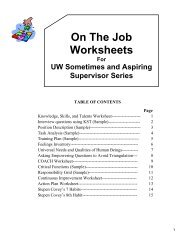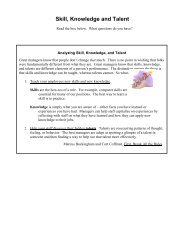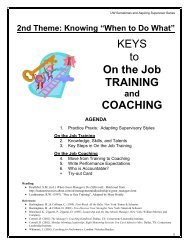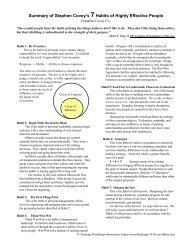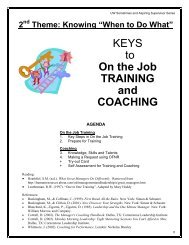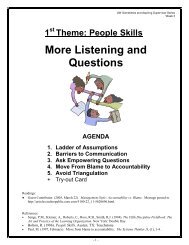Introduction to Integral Theory and Practice IOS Basic and the AQAL ...
Introduction to Integral Theory and Practice IOS Basic and the AQAL ...
Introduction to Integral Theory and Practice IOS Basic and the AQAL ...
You also want an ePaper? Increase the reach of your titles
YUMPU automatically turns print PDFs into web optimized ePapers that Google loves.
complexity. The greater <strong>the</strong> consciousness, <strong>the</strong> more complex <strong>the</strong> system<br />
housing it.<br />
For example, in living organisms, <strong>the</strong> reptilian brain stem is accompanied by<br />
a rudimentary interior consciousness of basic drives such as food <strong>and</strong> hunger,<br />
physiological sensations <strong>and</strong> sensorimo<strong>to</strong>r actions (everything that we earlier<br />
called “gross,” or centered on <strong>the</strong> “me”). By <strong>the</strong> time we get <strong>to</strong> <strong>the</strong> more complex<br />
limbic system, basic sensations have exp<strong>and</strong>ed <strong>and</strong> evolved <strong>to</strong> include quite<br />
sophisticated feelings, desires, emotional-sexual impulses <strong>and</strong> needs (hence, <strong>the</strong><br />
beginning of what we called <strong>the</strong> subtle body, which can exp<strong>and</strong> from “me” <strong>to</strong> “us”).<br />
As evolution proceeds <strong>to</strong> even more complex physical structures, such as <strong>the</strong><br />
triune brain with its neocortex, consciousness once again exp<strong>and</strong>s <strong>to</strong> a<br />
worldcentric awareness of “all of us” (<strong>and</strong> thus even begins <strong>to</strong> tap in<strong>to</strong> what we<br />
called <strong>the</strong> causal body.)<br />
That is a very simple example of <strong>the</strong> fact that increasing interior<br />
consciousness is accompanied by increasing exterior complexity of <strong>the</strong> systems<br />
housing it. When using <strong>IOS</strong>, we often look at both <strong>the</strong> interior levels of<br />
consciousness <strong>and</strong> <strong>the</strong> corresponding exterior levels of physical complexity, since<br />
including both of <strong>the</strong>m results in a much more balanced <strong>and</strong> inclusive approach.<br />
We will see exactly what this means in a moment.<br />
And Now: How Do They All Fit Toge<strong>the</strong>r?<br />
<strong>IOS</strong>—<strong>and</strong> <strong>the</strong> <strong>Integral</strong> Model—would be merely a “heap” if it did not suggest a<br />
way that all of <strong>the</strong>se various components are related. How do <strong>the</strong>y all fit <strong>to</strong>ge<strong>the</strong>r?<br />
It’s one thing <strong>to</strong> simply lay all <strong>the</strong> pieces of <strong>the</strong> cross-cultural survey on <strong>the</strong> table<br />
<strong>and</strong> say, “They’re all important!,” <strong>and</strong> quite ano<strong>the</strong>r <strong>to</strong> spot <strong>the</strong> patterns that<br />
actually connect all <strong>the</strong> pieces. Discovering <strong>the</strong> profound patterns that connect<br />
is a major accomplishment of <strong>the</strong> <strong>Integral</strong> Approach.<br />
<strong>Introduction</strong> <strong>to</strong> <strong>Integral</strong> <strong>Theory</strong> <strong>and</strong> <strong>Practice</strong>. Page 22






